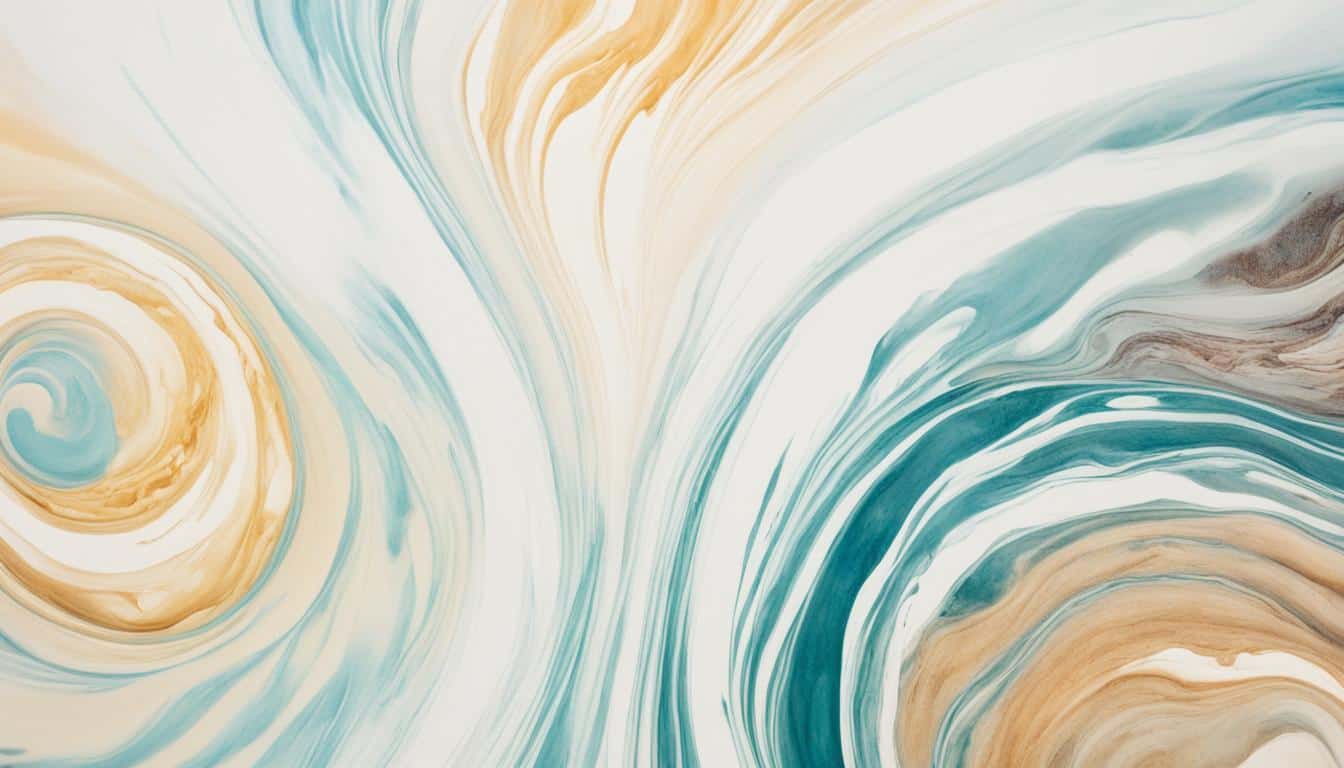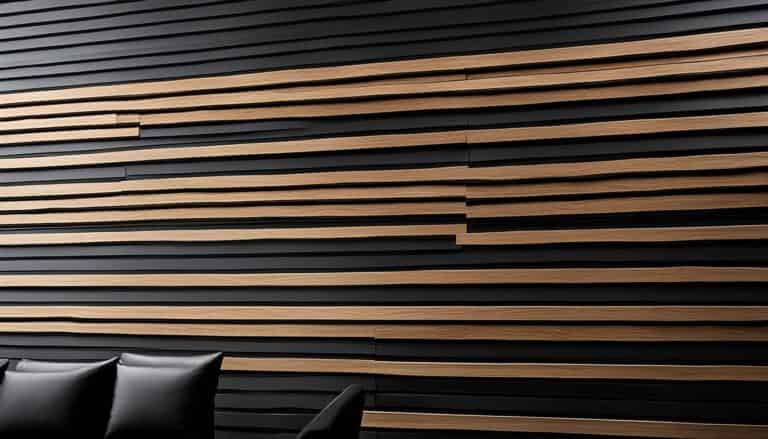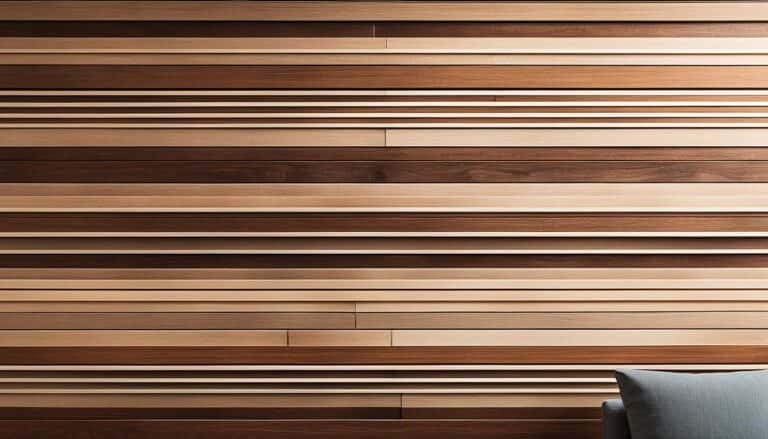Are you looking for a natural paint option that not only adds charm to your home but is also environmentally friendly? Look no further than milk paint. This centuries-old technique has gained popularity for its unique qualities and sustainable nature. But what exactly is milk paint and how can it transform your space? Let’s dive into the world of milk paint and discover its benefits, application techniques, and more.
Key Takeaways:
- Milk paint is a natural and eco-friendly alternative to traditional paint.
- It is made from milk protein, lime, and natural pigments.
- Milk paint is VOC-free, biodegradable, and compostable.
- It creates a unique, vintage look with natural crackling and chipping properties.
- Milk paint is versatile and can be used on various surfaces.
What is Milk Paint?
Milk paint is a unique type of paint that is composed of milk protein, lime, and natural pigments. It is a versatile and eco-friendly alternative to traditional paint. True milk paint, unlike other types of paint, does not contain any additives or pre-mixed ingredients. Instead, it comes in a powdered form and needs to be mixed with water before use.
True milk paint is renowned for its sustainability and non-toxic properties. It is made from natural ingredients, making it a healthier choice for both you and the environment. By opting for milk paint, you can reduce your exposure to volatile organic compounds (VOCs) that are commonly found in traditional paints.
“Milk paint is a natural and non-toxic paint option that is made from milk protein, lime, and natural pigments.”
Milk paint offers a wide range of benefits. Its unique composition allows it to create a beautiful vintage look, complete with natural crackling and chipping effects. This makes it an ideal choice for achieving a distressed or aged finish on furniture, walls, or decorative items.
With its eco-friendly nature and distinctive aesthetic appeal, milk paint is gaining popularity among homeowners, DIY enthusiasts, and professionals alike.
Whether you’re seeking a sustainable paint option or looking to add a touch of charm to your home decor, milk paint is an excellent choice. In the following sections, we will explore the various benefits of milk paint, its application techniques, and where to find it. Let’s dive in!
Benefits of Milk Paint
Milk paint offers numerous benefits that make it a popular choice for eco-conscious homeowners and DIY enthusiasts. From its eco-friendly composition to its unique aesthetic appeal, milk paint provides a safe and sustainable alternative to traditional paints.
Non-Toxic and Eco-Friendly
Milk paint is 100% VOC-free, meaning it does not release harmful chemicals into the air during application or over time. This makes it a non-toxic paint option that is safe for both the environment and your health. Unlike conventional paints that contain synthetic ingredients, milk paint is made from natural substances such as milk protein, lime, and natural pigments.
Indoor Use and Poor Ventilation
Due to its non-toxic nature, milk paint is safe to use indoors, even in poorly ventilated areas. This makes it ideal for individuals looking to create a healthier living space while minimizing their exposure to harmful fumes. Whether you’re painting walls, furniture, or decorative pieces, milk paint provides a safe and eco-friendly option that promotes a cleaner indoor environment.
Biodegradable and Compostable
One of the standout features of milk paint is its biodegradability and compostability. After use, milk paint can be disposed of in an environmentally responsible manner without contributing to landfill waste. Its natural ingredients break down easily, making it a sustainable choice for those seeking to reduce their environmental impact.
The benefits of milk paint extend beyond its eco-friendliness. This unique paint also provides a stunning vintage look with its natural crackling and chipping properties. It enhances the character and charm of any surface, whether it’s an antique furniture piece or a feature wall in your home.
With milk paint, you can easily achieve a distressed and aged appearance that adds a touch of nostalgia and warmth to your living space. The crackling and chipping effect creates a visual story, giving the illusion of paint layers accumulated over time. It’s a perfect choice for achieving a vintage aesthetic or adding a unique flair to your home decor.
How to Use Milk Paint
Using milk paint to transform your home decor is a fun and eco-friendly way to add a touch of vintage charm to your space. Whether you’re a seasoned DIY enthusiast or a beginner, here’s a step-by-step guide on how to use milk paint:
Mixing Milk Paint
To get started, mix the powdered milk paint with water according to the manufacturer’s instructions. The water-to-paint ratio may vary depending on the desired consistency. It’s important to follow the instructions carefully to ensure the paint reaches the right consistency for easy application.
Application Technique
Once the milk paint is properly mixed, use a good quality brush to apply it to the surface. Start with a thin and even coat, working your way across the entire area. Multiple coats may be required for full coverage, depending on the color and desired look. Allow each coat to dry completely before applying the next one.
Sanding for a Smooth Finish
Sanding between coats is optional but can help achieve a smoother finish. If you prefer a more distressed look, you can skip this step. However, if you want a polished finish, gently sand the surface with fine-grit sandpaper after the paint is completely dry. This will help create a smooth and even texture.
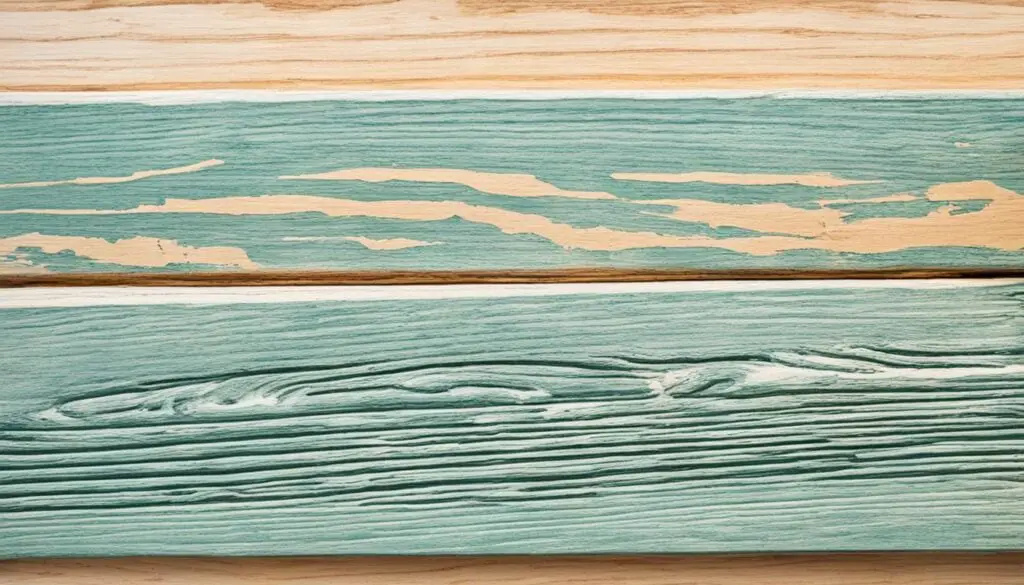
Tip: Before starting your milk paint project, it’s a good idea to practice on a small test piece or inconspicuous area to get a feel for the paint and the desired look you want to achieve.
Now that you know how to use milk paint, you can unleash your creativity and give your furniture, walls, or any other surfaces a unique and charming makeover. Experiment with different colors, distressing techniques, and finishes to create a personalized and vintage-inspired look in your home.
| Steps | Tips |
|---|---|
| Mixing Milk Paint | – Follow the manufacturer’s instructions for the water-to-paint ratio – Stir the mixture thoroughly until all the lumps are dissolved |
| Application Technique | – Use a good quality brush for smooth and even application – Start with thin coats and build up the desired coverage – Allow each coat to dry completely before applying the next one |
| Sanding for a Smooth Finish | – Gently sand the surface with fine-grit sandpaper after the paint is dry – Wipe off any dust before applying additional coats or finishes |
Milk Paint vs Traditional Paint
When it comes to choosing the right paint for your home, there are various options available, each with its own set of characteristics and benefits. Two popular choices are milk paint and traditional paint. While both types of paint serve their purpose, understanding their differences can help you make an informed decision. Let’s compare milk paint and traditional paint to see how they stack up against each other.
Composition and Characteristics
Milk paint is made from natural ingredients, including milk protein, lime, and natural pigments. It is VOC-free, meaning it does not release harmful volatile organic compounds into the air. On the other hand, traditional paint may contain chemicals that can have negative effects on indoor air quality.
Appearance and Finish
Milk paint is known for its unique aesthetic, creating a vintage look with natural crackling and chipping properties. It provides a charming, aged appearance that adds character to any surface. Traditional paint, on the other hand, offers a more uniform and consistent finish, ideal for achieving a modern and polished look.
Application Process
When it comes to mixing and application, milk paint requires a water-based process. The powdered milk paint needs to be mixed with water before application. This allows for customization in terms of consistency and color intensity. Traditional paint, on the other hand, is pre-mixed and ready to use, eliminating the need for any additional steps.
Color Range and Finishes
Both milk paint and traditional paint offer a wide range of colors to choose from. Milk paint often features softer, more muted tones that complement its vintage aesthetic. Traditional paint comes in a variety of shades, allowing for more versatility in color selection. Additionally, both milk paint and traditional paint offer different finishes, such as matte, satin, or gloss.
Cost and Availability
In terms of cost, milk paint can be more expensive than traditional paint due to its natural ingredients and unique manufacturing process. However, it is widely available through various retailers and online stores. Traditional paint, being a more common option, is generally more affordable and readily accessible at most hardware stores.
Summary
While milk paint and traditional paint have distinct differences in composition, appearance, application, and cost, they both serve their purpose in the world of painting. Milk paint offers an eco-friendly and vintage aesthetic, while traditional paint provides a more uniform and modern finish. Consider your personal style, preference, and project requirements when deciding between milk paint and traditional paint for your next home decor project.
| Milk Paint | Traditional Paint |
|---|---|
| Made from natural ingredients | May contain chemicals |
| Vintage look with crackling and chipping properties | Offers a uniform and consistent finish |
| Requires water-based mixing process | Pre-mixed and ready to use |
| Wide range of colors, often softer and muted tones | Wide range of colors and finishes |
| Can be more expensive | Generally more affordable |
Where to Buy Milk Paint
If you’re looking to purchase milk paint, there are several options available to you. Whether you prefer shopping in person or online, you’ll find a variety of retailers and suppliers that offer milk paint products. Here are some places where you can buy milk paint:
- The Old Fashioned Milk Paint Co: As a reputable manufacturer and supplier of true milk paint since 1974, The Old Fashioned Milk Paint Co is a reliable source for purchasing authentic milk paint. They offer a range of colors and finishes, ensuring high-quality products for your painting projects.
- Specialty Paint Stores: Many specialty paint stores carry milk paint, especially those focused on eco-friendly and sustainable options. These stores may offer a curated selection of milk paint brands and colors, providing you with a diverse range of choices.
- Eco-Friendly Home Decor Stores: If you’re passionate about sustainable living and environmentally friendly products, consider visiting eco-friendly home decor stores. These stores often stock milk paint alongside other eco-conscious home improvement options.
- Online Marketplaces: Online marketplaces like Amazon and Etsy offer convenient access to a wide selection of milk paint brands and colors. You can browse through customer reviews and ratings to ensure you’re making an informed purchase decision.
When buying milk paint, it’s important to check the authenticity and reputation of the supplier. Look for brands that prioritize natural, non-toxic ingredients and have positive customer feedback. By choosing the right supplier, you can ensure you’re getting high-quality milk paint for your projects.
Take a look at the image below to see some examples of milk paint colors:
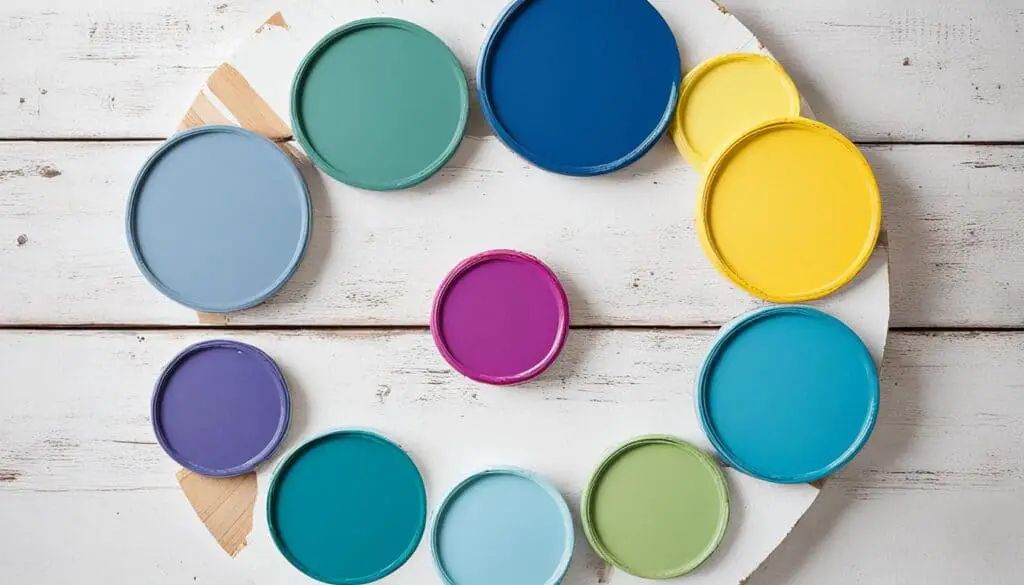
Milk Paint Colors
Milk paint comes in a wide range of colors, giving you the opportunity to add a unique touch to your home decor projects. From neutral tones to vibrant hues, there’s a milk paint color to suit every style and preference. Here are some popular milk paint colors:
| Color | Description |
|---|---|
| Classic White | A clean and bright white color that adds a fresh and timeless look to any surface. |
| Coastal Blue | A serene blue shade reminiscent of the ocean, perfect for coastal-inspired or rustic decor. |
| Spring Green | A lively and refreshing green color that brings a touch of nature into your space. |
| Sunflower Yellow | A cheerful and vibrant yellow hue that adds warmth and energy to any piece of furniture. |
| Barn Red | A rich and bold red color that evokes a sense of rustic charm and timeless appeal. |
These are just a few examples of milk paint colors available. You can also mix and layer different milk paint colors to create unique effects and custom shades. Remember to test the color on a small area or sample board before applying it to your desired surface.
Milk Paint Colors
Milk paint offers a wide range of color options to suit every style and preference. Whether you prefer neutral tones or vibrant hues, there’s a milk paint color that will complement your home decor.
Popular milk paint colors include:
- Whites
- Blues
- Greens
- Yellows
- Reds
Additionally, some milk paint brands provide custom color mixing options, allowing you to create personalized shades that match your vision perfectly. With milk paint, the possibilities are endless.
You can also experiment with mixing and layering milk paint colors to create unique effects and variations. This versatility allows you to unleash your creativity and achieve the desired look for your project.
Before applying milk paint to the entire surface, it’s always a good idea to test the color on a small area or sample board. This way, you can ensure that the color meets your expectations and complements your space perfectly.
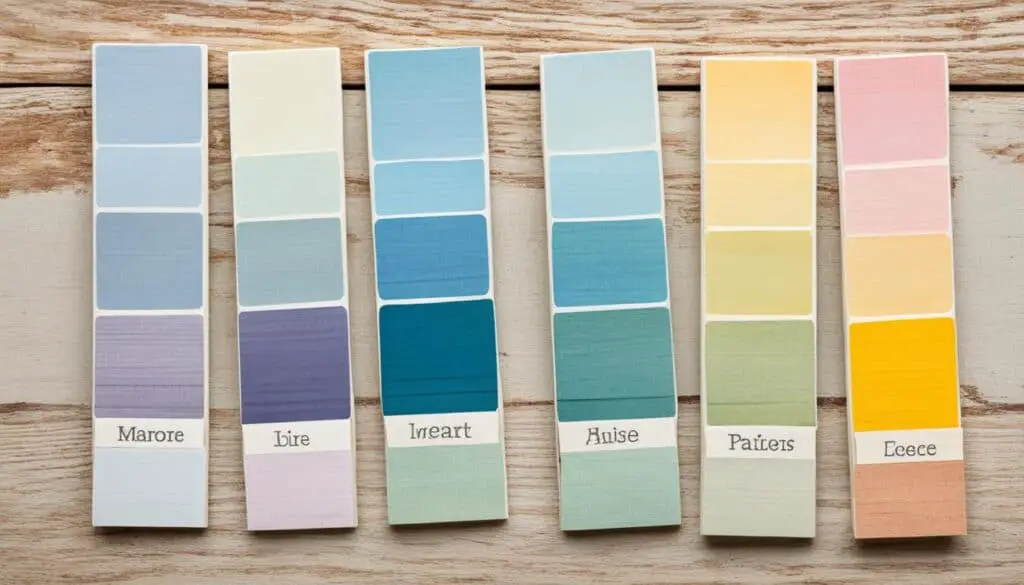
Milk Paint Furniture
Milk paint is a popular choice for painting furniture when you want to achieve a vintage or distressed look. Its unique characteristics and eco-friendly composition make it a top choice for DIY enthusiasts and professional furniture painters alike.
Milk paint is known for its excellent adherence to wood surfaces, allowing the natural grain and texture to show through. When applied correctly, it creates a beautiful, one-of-a-kind finish that adds character and charm to furniture pieces.
One of the advantages of using milk paint on furniture is that it can be further distressed to enhance the aged appearance. By using sandpaper or other techniques, you can create faux wear and tear that gives the piece a unique story and history.
Proper surface preparation is crucial when using milk paint on furniture. Ensure that the piece is clean and free from any debris or old finishes before applying the paint. This will help the milk paint adhere better and provide a more durable finish.
After painting, it’s essential to seal the milk paint to protect the surface. Wax or a topcoat can be applied to add a layer of protection and enhance the longevity of the finish. This step is especially important for furniture pieces that will be subjected to regular use and wear.
Milk Paint Furniture Makeovers
Let’s take a look at some stunning milk paint makeovers to inspire your next furniture painting project:
“I transformed an old wooden dresser with milk paint, and it completely revived the piece. The chipped paint and natural crackling created a charming antique look that became the focal point of my bedroom.” – Jessica
As you can see from the images above, milk paint can completely transform the look of furniture, giving it new life and personality. Whether you’re working with a vintage find or refreshing an outdated piece, milk paint offers endless possibilities for creating unique and beautiful furniture.
So, next time you’re planning to give your furniture a makeover, consider using milk paint for that vintage-inspired, one-of-a-kind finish.
Milk Paint Application Techniques
Milk paint offers versatile application techniques to achieve unique finishes on various surfaces. Experimenting with different methods can help you achieve the desired effect and enhance the overall look of your project.
Below are some popular milk paint application techniques:
1. Brush strokes
Using a good-quality brush, apply milk paint in smooth, even brush strokes. This technique is ideal for achieving a classic, clean finish.
2. Dry brushing
Dry brushing involves using minimal paint on a dry brush and quickly sweeping it over the surface. This technique creates a subtle, weathered appearance and adds texture to the finish.
3. Spraying
For larger projects or a more uniform finish, milk paint can be sprayed using a paint sprayer. This technique allows for efficient and even coverage.
Experimentation and practice are key to achieving the desired effect with milk paint.
Distressing is another popular technique used with milk paint to create an aged, vintage look. This involves intentionally removing or wearing off the paint to expose the underlying layers or create a worn appearance.
After applying milk paint, you can distress it using techniques such as sanding, scraping, or using a wet cloth. The amount and intensity of distressing can be tailored to your preference, giving your project character and charm.
Finishing steps are crucial for enhancing the durability and appearance of milk paint. Waxing or applying a topcoat seals and protects the painted surface, making it more resistant to wear and tear. It also adds a subtle sheen and enhances the color.
Tutorials and online resources provide step-by-step guidance for different milk paint techniques. They offer detailed instructions and visual demonstrations to help you master various application methods and achieve professional-looking results.
Example of a distressed milk paint finish:
| Technique | Description |
|---|---|
| Brush strokes | Apply milk paint with smooth, even brush strokes for a clean finish. |
| Dry brushing | Use minimal paint on a dry brush to create a weathered appearance and add texture. |
| Spraying | Use a paint sprayer for efficient and even coverage on larger projects. |
| Distressing | Intentionally remove or wear off the paint to create an aged, vintage look. |
| Finishing | Seal and protect the painted surface with waxing or applying a topcoat. |
By exploring different milk paint techniques and embracing the unique properties of this eco-friendly paint, you can create stunning finishes and transform your projects into works of art.
Tips for Using Milk Paint
Milk paint is a unique and versatile paint option that can create a charming vintage look on furniture and home decor. While it offers endless possibilities for customization and creativity, there are a few tips and tricks to keep in mind to ensure successful results with your milk paint projects.
Embrace the Unique Characteristics of Milk Paint
Milk paint is known for its distinctive properties, such as crackling, chipping, and the natural patina it develops over time. Instead of trying to control or prevent these effects, embrace them as part of the charm and character of milk paint. It’s what gives your project that authentic vintage vibe.
Proper Surface Preparation
Before applying milk paint, it’s essential to properly prepare the surface to ensure optimal paint adhesion. Start by cleaning the surface thoroughly and removing any dirt, grease, or existing finishes. Lightly sanding the surface can also improve adhesion and create a smooth base for the paint.
Adjust the Water-to-Paint Ratio
One of the unique aspects of milk paint is its ability to be customized by adjusting the water-to-paint ratio. This ratio can affect the consistency and coverage of the paint. Experiment with different ratios to achieve the desired effect, whether you want a more transparent wash or a thicker, opaque finish.
Practice on Small Projects
If you’re new to milk paint or trying out new techniques, it’s a good idea to practice on small projects or test pieces before tackling larger furniture pieces. This allows you to get a feel for how the paint behaves and experiment with different application techniques without the pressure of a large project.
| Tips for Using Milk Paint |
|---|
| Embrace the unique characteristics of milk paint, such as crackling, chipping, and the natural patina. |
| Properly prepare the surface by cleaning and light sanding to ensure optimal paint adhesion. |
| Adjust the water-to-paint ratio to achieve the desired consistency and coverage. |
| Practice on small projects or test pieces before tackling larger furniture pieces. |
By following these tips, you’ll be able to achieve beautiful results with milk paint and create stunning, one-of-a-kind pieces for your home.
Milk Paint and the Environment
Milk paint is not only a beautiful and versatile paint option but also a sustainable and eco-friendly choice for your home decor projects. Its natural ingredients and biodegradability make it an environmentally conscious alternative to traditional paints.
By choosing eco-friendly milk paint, you can significantly reduce your carbon footprint and contribute to a healthier planet. It’s a small step that can make a big difference in the long run.
The production and disposal of milk paint have minimal impact on air and water quality. Unlike conventional paints that release harmful volatile organic compounds (VOCs) into the atmosphere, milk paint is VOC-free and does not release any toxic fumes during application or curing.
Another eco-friendly aspect of milk paint is its ease of disposal. Once you’re done with your project, you can safely wash the paintbrushes and leftover milk paint down the drain without worrying about polluting the water system. Milk paint does not contain any harmful chemicals that can harm aquatic life or contaminate water sources.
Choosing sustainable paint options like milk paint aligns with a more environmentally responsible lifestyle. It’s a conscious decision to reduce the use of harmful chemicals, minimize waste, and create a healthier living environment for yourself and future generations.
The Benefits of Eco-Friendly Milk Paint
“Using milk paint not only lets you create a beautiful vintage or distressed look but also allows you to make a positive impact on the environment.”
| Benefits of Eco-Friendly Milk Paint | Traditional Paint Disadvantages |
|---|---|
| Made from natural ingredients | Contains harmful chemicals and VOCs |
| Biodegradable and compostable | Non-biodegradable and contributes to landfill waste |
| Zero VOCs and no toxic fumes | Releases VOCs and harmful fumes during application and drying |
As shown in the table, eco-friendly milk paint offers multiple advantages over traditional paint options. From its natural composition to its biodegradability and lack of toxic fumes, milk paint provides a safer and more sustainable solution for your home decor projects.
Conclusion
In conclusion, milk paint is a natural and eco-friendly option for home decor, providing numerous benefits over traditional paint. Its composition of milk protein, lime, and natural pigments makes it 100% VOC-free and safe to use indoors, even in poorly ventilated areas. Milk paint not only adds a unique, vintage look to surfaces like furniture and walls but also allows for easy distressing and creates a charming, aged appearance.
When using milk paint, it is essential to follow the proper mixing and application techniques. The powdered paint needs to be mixed with water, and multiple coats may be required for full coverage. Sanding between coats is optional but can help achieve a smoother finish. It is also crucial to choose a reputable supplier for authentic milk paint and to test the color on a small area before applying it to the entire surface.
By opting for milk paint, you not only bring beauty to your home but also contribute to a more sustainable lifestyle. Milk paint is biodegradable and compostable, making it an environmentally friendly choice. Its production and disposal have minimal impact on air and water quality, and it can be safely washed down the drain. So, why not consider milk paint for your next home decor project and embrace its natural charm?
FAQ
What is milk paint?
Milk paint is a type of paint made from milk protein, lime, and natural pigments. It comes in a powdered form and needs to be mixed with water before use.
What are the benefits of milk paint?
Milk paint is eco-friendly, non-toxic, and 100% VOC-free. It provides a unique, vintage look with natural crackling and chipping properties. It can be used on various surfaces and is safe to use indoors.
How do you use milk paint?
To use milk paint, mix the powdered paint with water according to the manufacturer’s instructions. Apply the paint to the surface using a brush and allow it to dry. Multiple coats may be required for full coverage.
What is the difference between milk paint and traditional paint?
Milk paint is made from natural ingredients and is VOC-free, while traditional paint may contain harmful chemicals. Milk paint creates a unique, vintage look with crackling and chipping properties, while traditional paint provides a more uniform finish. Milk paint requires water-based mixing, while traditional paint comes pre-mixed.
Where can I buy milk paint?
Milk paint can be purchased from various retailers and online stores. The Old Fashioned Milk Paint Co is a reputable manufacturer and supplier of true milk paint. Many specialty paint stores and eco-friendly home decor stores carry milk paint. Online marketplaces such as Amazon and Etsy also offer a wide selection of milk paint brands and colors.
What colors are available in milk paint?
Milk paint is available in a wide range of colors, from neutral tones to vibrant hues. Popular milk paint colors include whites, blues, greens, yellows, and reds. Some milk paint brands offer custom color mixing options for personalized shades.
Can milk paint be used on furniture?
Yes, milk paint is commonly used for painting furniture to achieve a vintage or distressed look. It adheres well to wood surfaces and allows the natural texture and grains to show through. Milk painted furniture can be further distressed using sandpaper or other techniques.
What are some milk paint application techniques?
Milk paint can be applied using various techniques, such as brush strokes, dry brushing, or spraying. Distressing is a popular technique that involves intentionally removing or wearing off the milk paint to create an aged look. Finishing steps, such as waxing or applying a topcoat, can enhance the durability and appearance of milk paint.
Do you have any tips for using milk paint?
Yes, it is recommended to test the color on a small area or sample board before applying it to the entire surface. Proper surface preparation, including cleaning and light sanding, can improve paint adhesion. Adjusting the water-to-paint ratio can affect the consistency and coverage of the milk paint. Practice on small projects or test pieces before tackling larger furniture pieces.
Is milk paint environmentally friendly?
Yes, milk paint is a sustainable and eco-friendly paint option. It is made from natural ingredients, is biodegradable, and has minimal impact on air and water quality. By using milk paint, you can reduce your carbon footprint and contribute to a healthier environment.


